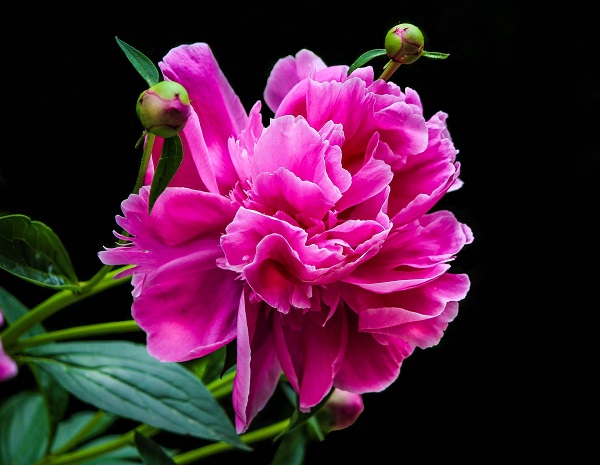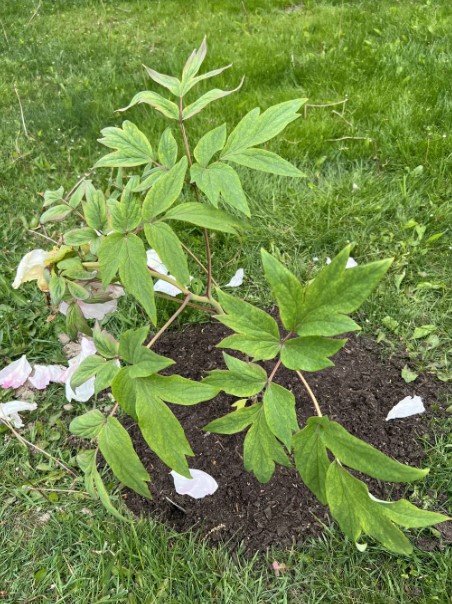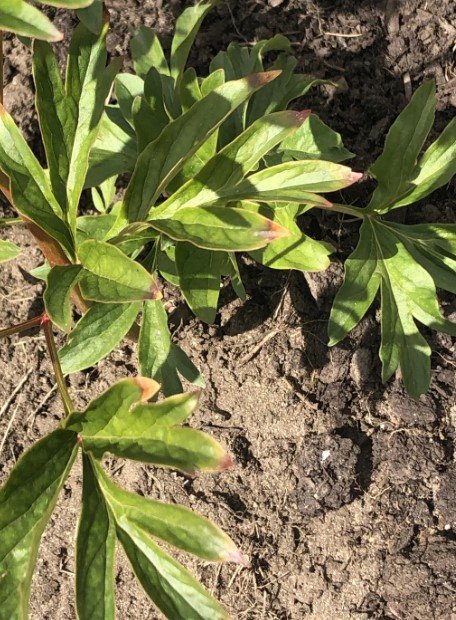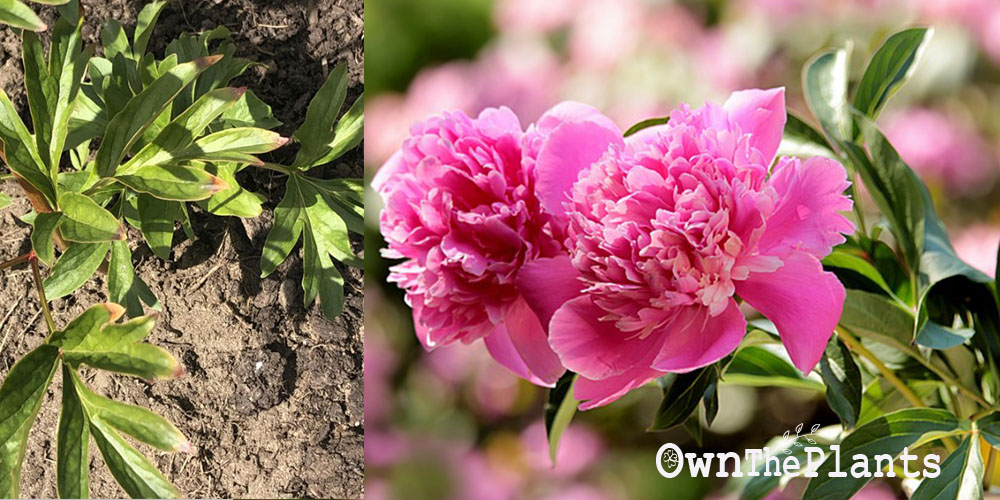Nothing really beats a garden full of outrageous blooms and lush viridescent foliage of peonies.
Their breathtaking, vibrant followers of different colors and shapes from spring to summer is really a view to relish. Undoubtedly, peony plants are a staple to anyone’s garden.
However, these vivid colors can actually take a full turn and just be a sea of pale yellow if things are not in their right conditions.
Peonies, like any other plants, are prone to problems which can cause them to turn sickly and yellow. This is an outright problem but do not worry too much because we are here to show you solutions.
In this article, we will discuss thoroughly why peonies turn yellow, what causes it, and how to solve this problem.
We will also give you more information about these gorgeous flowering plants so that you will know your plant better.
There is nothing else to wait for! Let’s dive right in.
Getting to Know Peonies

The peony plant, sometimes spelled as paeony, is a flowering plant from the genus Paeonia, the sole genus in the Paeoniaceae family.
Currently, the number of species of this plant ranges from 25 to 40. This plant is native to Europe, Western part of North America and Asia.
The peonies are popular garden plants, especially in the temperate regions of the world. Their large, scented flowers offer a wide display of colors from red, pink, purple, white, or yellow, during late spring and even after early summer. The flowers are only short-lived and only bloom for 7 to 10 days.
In the present, there are 6 peony flower types that you can choose, each with distinct characteristics and features. The types are single, anemone, double, semi-double, bomb, and the Japanese type.
Why Is My Peony Turning Yellow?
Plants are susceptible to many problems, and your peony plant is no exception.
If you ever see your peonies turning yellow, try your best to stay calm and not panic. This is a common problem that plant owners face, and it is caused by a lot of things.
The main possible reasons for having yellow leaves on your peony plant are watering problems, fungal diseases, transplant shock, lack of nutrients and sunlight, and other environmental stressors. We will delve into these reasons one by one and give solutions for each of them.
Continue reading below to determine which one causes problems to your peonies and know how to prevent this problem in the future.
Watering Problems/Overwatering
Overwatering is among the most common causes of yellowing leaves of peonies.

Peonies are known to be drought hardy and can tolerate low amounts of water from time to time, hence too much water can really damage them.
If you suspect that this is the main cause of your yellowing peony, then you should rectify your watering schedule.
Aim to reduce the water that you give to your plant. To do this, you should check your watering routine and reassess it.
Since your peonies are easily overwatered, it is better to check the soil first before watering. Stick your finger or a stick to the top 2 to 3 inches of soil.
If it is still moist, then be patient and skip watering for another day or two. If it is already dry, then it is your sign to water your plant.
If this problem still persists, then it is time for you to check the plant if it is getting enough drainage. If the soil gets waterlogged for a long period of time, consider replacing the soil with a new, well-draining, fresh mix.
Roots sitting in water for an extended time are prone to root rotting, which ultimately causes yellowing leaves to plant.
You might like: Why Are My Chinese Evergreen Leaves Yellow? (9 Causes + Fix)
Fungal Infections
Fungi and other plant pathogens are nasty plant problems that cause a lot of issues to your plants.
If you see blotches or spots on the yellowing leaves of your peony, then most probably that the problem is caused by a fungal infection.
The most common type of fungi that causes problems to peonies is the botrytis blight, which is also commonly known as the gray mold.
This fungi infects young shoots as they sprout from the ground, and can infect flowers or buds at any plant stage.
This problem needs to be fixed immediately as fungi can spread from plant to plant at a fast rate, depending on the environmental conditions.
Remove the infected parts as soon as you observe them and discard them properly.
Spray your plant with commercially available fungicides or horticultural oils, such as neem oil if you opt for a more natural alternative.
It is best if you isolate your infected peony first to avoid spreading the infection to the rest of your garden plants.
Also, make sure to clean up any petals or leaves around the plant that may still have the fungi. One way to prevent further fungal infection is to keep your garden clean.
Nutrient Deficiencies
Lack of nutrients can also be a cause of your yellowing peony.
Check your plant and if you see white or pale patches accompanying the yellowing leaves, then it is definitely a nutrient deficiency problem. In peonies, the most common nutrient depletion is nitrogen and iron.
This problem is easy to fix. Just fertilize your plant with a well-balanced, all purpose fertilizer that has iron in it. The most recommended fertilizer for peonies would be a 10-10-10 fertilizer. This plant food has the right ratio of nutrients to make your plant green and healthy.
However, always remind yourself that feeding a plant should not be done too often. Overfertilization can happen and can cause more harm to your plant than good.
Chemical burns can also cause yellowing leaves. For example, excessive nitrogen can cause your leaf to scorch.
Generally, once a month feeding is enough for your plant, especially during their active growth season in spring and summer.
Lessen this during the winter season as cooler temperatures make your plant absorb nutrients much slower, hence there is really no need to feed them as frequently as the other seasons.
Light Problems/Lack of Light

Light is very essential to plants as it is their source of energy. Without sufficient light, they cannot make their own food which will sustain many metabolic processes that help them survive. Light is also needed for plants to produce green pigments, called chlorophyll; hence without enough light, they can look pale and yellow.
If your peony is not getting the right amount of sunlight, it will produce less chlorophyll and the leaves will become yellow. The best fix is to move your plant somewhere where light is available.
However, make sure that your plant will NOT be receiving direct sunlight for a long period of time.
Direct sunlight can surely harm and scorch the leaves of your plants. Also, make sure that your plant is not being shaded by other objects or plants to ensure it gets the optimum sunlight it needs to thrive.
Other Environmental Stress
Aside from the causes mentioned above, there are still a lot of factors that can cause your plant to turn yellow.
Some are environmental factors that are really out of your hands like temperature, wind, or even drought.
You cannot do anything to stop these environmental stressors, but you can do something to mitigate the effects they have on your plant.
Extreme temperatures can cause yellowing leaves to your plant. This is because peonies are sensitive to fluctuating temperatures and are easily damaged by extreme cold or heat.
Wind can also cause peonies to turn yellow. Especially in areas with strong winds, windburns in peonies are common.
Should I Prune Yellow Leaves of My Peony?
It’s not necessary to cut the yellow leaves of your peony in order for it to survive. You can just leave them be and wait for them to naturally fall off from your plant.
Although they are not as efficient as the green, healthy leaves, they can still photosynthesize and make plant food.
However, depending on the cause of the yellowing leaves, you might just be forced to cut them off.
If the main cause of the yellowing leaves is due to fungal infections, then prune these yellow leaves right away and discard them properly to avoid further spreading.
If you cut the yellow leaves, make sure to cut them at an angle. This will prevent your plant from being damaged further and will help it heal quickly.
More importantly, do not forget to wash and sterilize your cutting tool afterwards.
Will My Yellow Peony Leaves Turn Green Again?
Unfortunately, yellow peony leaves will stay yellow until they ultimately die and fall off naturally from your plant. The yellowing of the peony leaves, especially if it is in extreme condition, is irreversible.
However, do not stop from giving your plant the right fix and appropriate care it needs.
Eventually, the yellow leaves will be turned over with fresh, new, healthy ones, and they will look their best again in no time.
You might like: Why Does My Philodendron Have Yellow Leaves? (Here’re The Answers + Fix)
Final Thoughts
Gardening is always accompanied by problems, no matter how meticulous and religious you are to your plant routine.
There is no perfect garden free from issues. What you can do is to understand your plant better and try to prevent these problems as much as you can.
Yellowing of plants is a common problem that all plant owners face at least once in their plant journey.
Do not ever be disheartened if you ever experience this one. Even the best in the plant community has no immunity to this plant issue.
We can only hope this article has helped you in saving your lovely peonies. If it does, we want to hear from you in the comment section down below.
Share your experience with peonies and let the whole world know how good of a plant parent you are!
